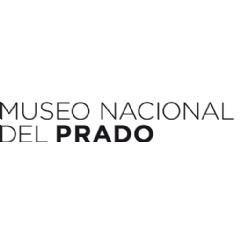The Museo del Prado presents the first monographic exhibition on portraits by Lorenzo Lotto
The Museo del Prado and the National Gallery in London are presenting the first major monographic exhibition on portraits by Lorenzo Lotto, one of the most unique and fascinating artists of the Italian Cinquecento. The intensity of these works and the variety and sophistication of the visual and intellectual resources that they deploy make Lotto the first modern portraitist.
Organised with the sole sponsorship of Fundación BBVA, this exhibition features 38 paintings, 10 drawings, a print and around 15 sculptures and objects similar to those depicted in the portraits, the latter offering a reflection of material culture of the time. The exhibition is on display in Rooms A and B of the Prado’s Jerónimos Building and is curated by Enrico Maria Dal Pozzolo of the University of Verona, and Miguel Falomir, director of the Museo del Prado.
The Museo del Prado is presenting the first major monographic exhibition on Lorenzo Lotto’s portraits. Co-organised with the National Gallery in London, it is benefiting from the sole sponsorship of Fundación BBVA and is the Museum’s most important exhibition this summer.
Lorenzo Lotto (Venice, 1480 – Loreto, 1557) was one of the most unique and fascinating artists of the Italian Cinquecento. His reputation has consistently grown among scholars and art lovers since Bernard Berenson devoted the first monograph to him, Lorenzo Lotto. An Essay in Constructive Criticism, published in 1895. Writing at the time of the emergence of Freudian psychoanalysis, Berenson saw Lotto as the first portraitist to be interested in reflecting his sitters’ states of mind, and as such the first modern one. Although interest in the artist has been particularly notable since the 1980s, until now no exhibition has focused exclusively on the portraits, making this project a pioneering one.
The exhibition focuses on already known aspects of Lotto’s portraiture such as their varied typology, psychological depth and complex symbolism. In addition, it explores other less familiar ones such as the artist’s use of similar resources in his portraits and religious works, the importance of the objects present in the portraits as reflections of material culture of the day, and the creative process behind the realisation of these works.
Lorenzo Lotto. Portraits also offers an unprecedented perspective on the artist’s works through the presence in the galleries of objects similar to those seen in the portraits, in a reflection of material culture of the day. In addition, it looks at the way in which the artist conceived and executed his portraits and in this regard and given the lack of technical analyses of these works, the inclusion of drawings by him (rarely displayed alongside the paintings) are of particular importance.
The variety of typologies that Lotto employed; the overt or concealed symbolism within them; the psychological depth with which he imbued his models; and the importance he gave to objects in order to define their status, interests and aspirations all give these portraits a degree of profundity which allow Lotto to be seen as the artist who best reflected Italy at the time, a country experiencing a profound period of change.
( Press Release Image: https://photos.webwire.com/prmedia/6/225375/225375-1.png )
WebWireID225375
This news content was configured by WebWire editorial staff. Linking is permitted.
News Release Distribution and Press Release Distribution Services Provided by WebWire.
